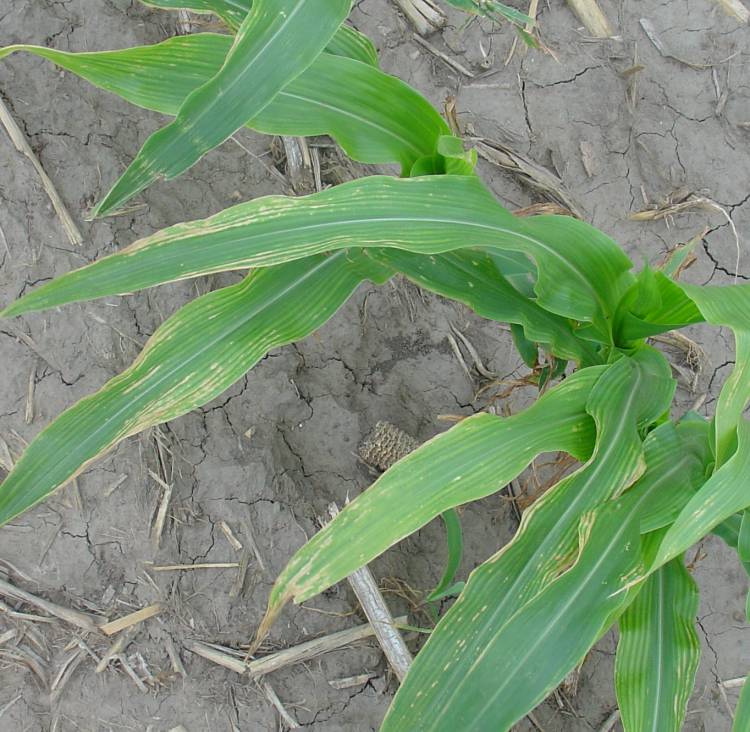
As a continuation of the
striped corn we have been seeing in Central Nebraska. Jennifer Chaky of the UNL Plant
Diagnostic Clinic examined the corn from the field pictured below. She reported that the sample was negative to
Stewart’s Wilt based on an Elisa Test of the tissue and also negative to Goss’s
Wilt based on the results on selective media. Additional tests produced an isolation of
bacteria from the tissue which appears to be Pseudomonas syringae based on the
biolog test.
Further
tests indicated that the symptoms on the leaves may be caused by Xanthomonas campestris,
which can cause leaf spotting or striping symptoms. The
plant may outgrow the symptoms if they are mostly on the leaves, the weather becomes dryer
and warmer, and the disease does not continue to spread.

Although the soybean crop
seems to be a little slow in getting growing and developing a canopy this year, there are
some excellent looking soybean fields. Unfortunately, there seems to be more that are
looking pretty mediocre. There are areas in the fields where the beans are yellow with
spotting on the leaves and very stunted growth. We
sent one sample to the UNL Plant Diagnostic Clinic and received this report.
Bacterial Blight, Psuedomonas savastanoi
pv glycinea was found on the sample, based on the symptoms and the bacterial
streaming from the tissue. The disease can
survive in crop residue or on the seeds. The disease can spread during wind storms and
cool wet weather favors development. The
disease is often slowed by dry weather. The
disease is managed through resistant plant varieties, residue management and using
disease-free seed.
Although there may be several things that may
be contributing to the poor soybeans that we are seeing, we believe that the Bacterial
Blight is involved in many of them.